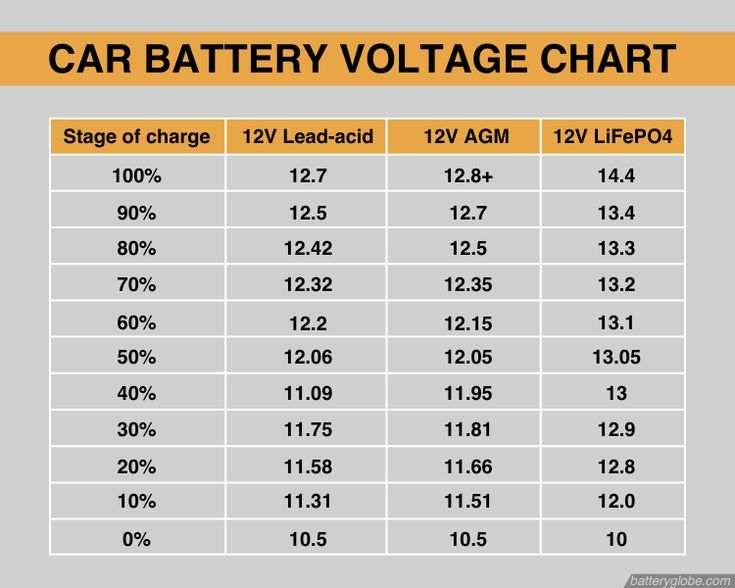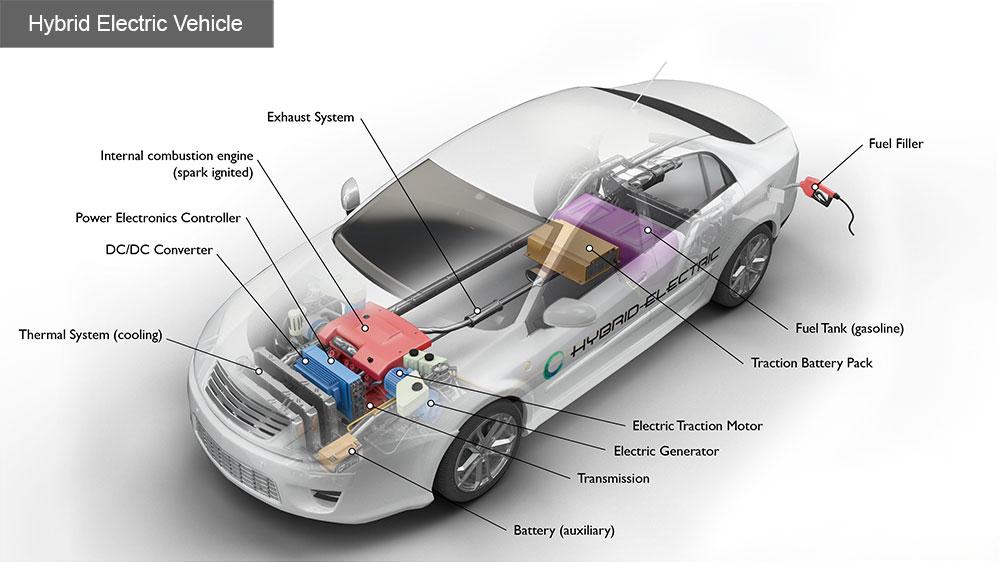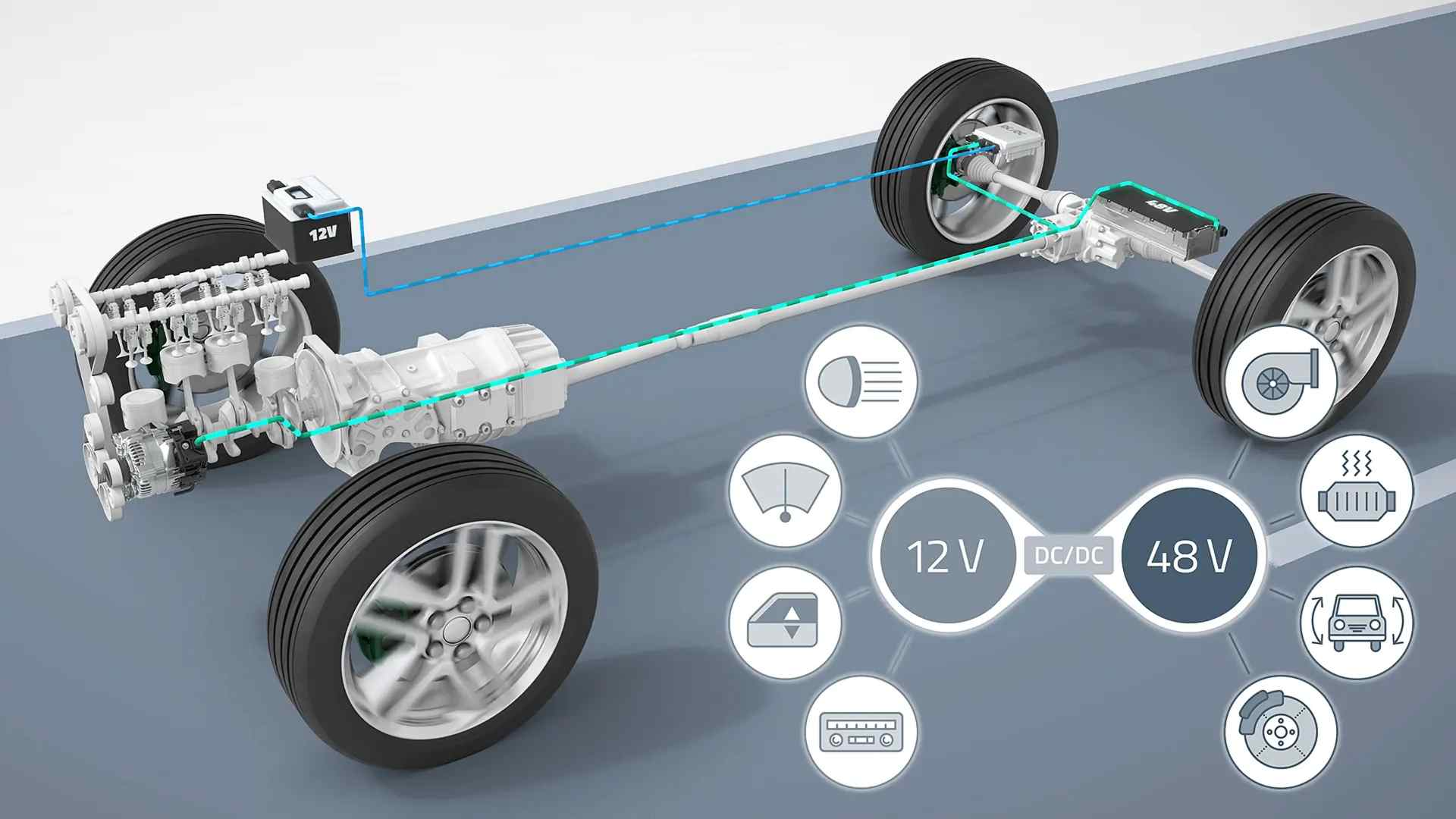The car battery is an indispensable component of any vehicle, serving as the powerhouse that ignites the engine and powers various electrical systems. Different types of vehicles require distinct battery specifications to meet their unique operational demands. For instance, traditional internal combustion engine (ICE) cars typically utilize 12-volt batteries to cater to their starting and lighting needs. In contrast, electric vehicles (EVs) often employ higher voltage batteries, such as 400V or even 800V systems, to deliver the substantial energy required for propulsion and to support rapid charging capabilities.

Car batteries operate at different voltages depending on the state of the vehicle and its electrical system. Here's a detailed explanation of the various operating voltages.
Resting voltage: When the car and its electrical system are off, a fully charged 12V car battery will typically have a resting voltage of around 12.6 to 12.8 volts. This is the voltage of the battery without any load or charging process affecting it.
Engine starting (Cranking voltage): When the engine is being started, the battery voltage can drop temporarily. During cranking, the voltage can fall to as low as 9 to 10 volts due to the high current draw from the starter motor. This is normal and the voltage should recover once the engine starts.
Charging voltage (Engine running): Once the engine is running, the alternator takes over and charges the battery. The charging system increases the voltage to a range of about 13.7 to 14.7 volts. This higher voltage is necessary to recharge the battery and support the electrical needs of the vehicle while it's running. The exact voltage within this range can vary depending on the vehicle's electrical load and the battery's state of charge.
Under load: When electrical accessories (like headlights, air conditioning, and audio systems) are in use, the battery supplies additional power. The voltage can vary depending on the load but generally stays within the 12 to 14.7 volts range when the engine is running. The alternator works to maintain the voltage by compensating for the electrical load.
Undercharging: If the voltage is consistently below 12 volts while the engine is running, it may indicate that the battery is undercharging. This could be due to a failing alternator or an issue with the vehicle’s electrical system.
Overcharging: If the voltage exceeds 15 volts while the engine is running, it can indicate an overcharging situation, which is harmful to the battery and can lead to premature failure. This condition can be caused by a malfunctioning voltage regulator or alternator.
It's important to note that these voltages are typical for traditional 12V lead-acid car batteries. Vehicles with different types of batteries, such as hybrid or electric vehicles equipped with high-voltage systems, will have different voltage ranges and operating characteristics.The 12V battery system in conventional internal combustion engine vehicles is fundamental for starting the engine and powering electrical accessories. Its simplicity, reliability, and cost-effectiveness have made it a standard in the automotive industry. However, it is limited in its capacity to support modern vehicle demands compared to the higher voltage systems found in hybrid and electric vehicles.

Hybrid vehicles (HEVs) combine an internal combustion engine (ICE) with an electric motor powered by a battery. The battery voltages in hybrid vehicles are typically lower than those in fully electric vehicles (EVs), but they still vary depending on the type of hybrid system and the specific vehicle model.
Mild hybrid electric vehicles (MHEVs)
Example: The Audi A6 55 TFSI e and many other modern MHEVs.
Typical voltage: Around 48V.
Requirements: These systems use a 48V lithium-ion battery and an integrated starter-generator (ISG). The lower voltage reduces the need for heavy and expensive insulation and simplifies the system.
Impact: The 48V system provides support for the ICE by enabling features like start-stop functionality, regenerative braking, and power assist. It improves fuel efficiency and reduces emissions but does not allow for pure electric driving.
Full hybrid electric vehicles (FHEVs)
Example: The Toyota Prius, one of the most well-known full hybrids.
Typical voltage: 200-300V.
Requirements: Full hybrids require a more robust battery system, typically nickel-metal hydride (NiMH) or lithium-ion, to store sufficient energy for electric power assist and short-distance pure electric driving.
Impact: These systems enable more significant fuel savings and lower emissions compared to mild hybrids. The higher voltage allows for better performance of the electric motor, supporting both the ICE and providing limited electric-only driving capability.
Plug in hybrid electric vehicles (PHEVs)
Example: The Chevrolet Volt and the BMW 330e.
Typical voltage: 300-400V.
Requirements: PHEVs use high-capacity lithium-ion batteries and require advanced power electronics to manage charging and discharging cycles efficiently. They also need an onboard charger to handle external electricity input.
Impact: PHEVs offer the ability to drive significant distances on electric power alone, thanks to their higher voltage and larger battery capacity. This results in substantial fuel savings and lower emissions. The higher voltage also supports faster acceleration and better overall performance.
Higher voltage systems in full hybrids and PHEVs allow for more efficient energy use and better performance. The electric motor can provide more substantial power assistance to the ICE, reducing fuel consumption and emissions. Mild hybrids, with their lower voltage systems, offer limited performance enhancements but still contribute to improved fuel efficiency and lower emissions compared to conventional ICE vehicles.
Mild hybrids typically cannot drive on electric power alone due to their lower voltage and smaller battery capacity. Full hybrids can drive short distances (usually a few miles) on electric power alone, thanks to their higher voltage systems. PHEVs can drive substantial distances (often 20-50 miles or more) on electric power alone, making them more versatile and reducing dependence on the ICE for short trips.
Mild hybrids do not require external charging and rely on regenerative braking and the ICE to recharge the battery. Full hybrids also do not need external charging but benefit more from regenerative braking due to their higher voltage systems. PHEVs need external charging infrastructure to fully utilize their electric driving capabilities. The higher voltage allows for faster charging and more efficient energy recovery during regenerative braking.
Mild hybrids are generally less expensive and less complex than full hybrids and PHEVs because of their lower voltage systems and smaller batteries. Full hybrids are more complex and costly due to their higher voltage systems and the need for advanced battery management and power electronics. PHEVs are the most complex and expensive among hybrid vehicles, requiring high voltage systems, larger batteries, and additional components for external charging.
Electric vehicles (EVs) rely on high-voltage battery packs to power their electric motors, providing the energy needed for propulsion. Additionally, they often use a separate low-voltage system to handle auxiliary functions. This dual-voltage setup is crucial for the efficient operation of EVs.
Voltage: High voltage battery packs in EVs typically range from 200V to 800V, depending on the vehicle model and its performance requirements.
Examples:
Nissan Leaf: ~360V
Tesla Model S: ~400V
Porsche Taycan: ~800V
Battery pack: Composed of numerous lithium-ion cells arranged in series and parallel to achieve the desired voltage and capacity.
Electric motor: Powered directly by the high-voltage battery pack.
Inverter: Converts the DC power from the battery to AC power for the electric motor (in most EVs).
Onboard charger: Converts AC power from a charging station to DC power to charge the high-voltage battery.
Efficiency: Higher voltage systems generally improve efficiency by reducing current for a given power level, thus reducing losses due to resistance.
Charging speed: Higher voltage allows for faster charging. For example, the Porsche Taycan’s 800V system can take advantage of ultra-fast DC fast chargers.
Power output: Higher voltage systems can deliver more power to the motor, enhancing acceleration and overall performance.

Voltage: EVs also use a 12V or 48V auxiliary battery system to power traditional automotive accessories and systems.
Examples:
12V systems: Used in most EVs for compatibility with existing automotive components.
48V systems: Seen in some modern EVs and hybrids to support more demanding electrical loads and improve efficiency.
Auxiliary battery: Typically a lead-acid or lithium-ion battery that powers lights, infotainment systems, power windows, and other accessories.
DC-DC converter: Steps down voltage from the high-voltage battery pack to maintain and charge the auxiliary battery.
Electrical systems: All standard electrical components like lighting, HVAC controls, infotainment, and safety systems.
Reliability: The 12V or 48V system ensures that essential functions remain operational even if the high-voltage system is compromised.
Integration: Using a familiar 12V system allows for easier integration of existing automotive components and simplifies the design process.
Electric vehicles utilize high-voltage battery systems ranging from 200V to 800V for propulsion, significantly enhancing efficiency, performance, and charging speed. They also incorporate 12V or 48V auxiliary systems to manage traditional electrical functions, ensuring reliability and compatibility with existing automotive components. This dual-voltage approach is key to the advanced capabilities and convenience offered by modern EVs.
The voltage of a car battery is critically important because it ensures that the vehicle's starter motor has sufficient power to crank the engine, while also providing a stable and reliable power source for all electrical systems and accessories, such as lights, infotainment systems, and sensors. Adequate battery voltage is essential for the overall performance, reliability, and safety of the vehicle, as insufficient voltage can lead to starting issues and malfunctioning of electrical components.
Several factors can affect a car battery's voltage, including temperature, age, and usage patterns. Extreme cold temperatures can reduce the battery's ability to hold a charge, while high temperatures can accelerate the chemical reactions inside the battery, leading to faster degradation. As the battery ages, its capacity to maintain voltage decreases due to the natural wear and tear of its internal components. Frequent short trips can also impact voltage, as the battery does not have enough time to fully recharge between uses. Additionally, leaving electrical accessories on when the engine is off can drain the battery, further reducing its voltage.




The lab focuses on solid-state battery research to overcome traditional lithium batteries' safety and energy density issues, supporting environmental sustainability. It develops innovative solid-state electrolytes, refines electrode materials, and investigates ion transfer and interface stability to revolutionize battery technology.

The electric vehicle battery industry is rapidly developing, focusing on technological innovation, market competition, and sustainability. Research hotspots include solid-state batteries, new types of electrolytes, BMS optimization, and recycling technologies. The environmental adaptability, safety, and economic viability of batteries are key research areas, and the industry is expected to undergo more innovation and transformation.

Specializing in battery preparation technology research, the focus is on overcoming existing energy storage challenges by innovating in electrode materials, battery chemistry, and manufacturing processes to improve performance, safety, and reduce costs. Sustainability and recycling technologies for batteries are also emphasized to mitigate environmental impacts and foster the growth of green energy.